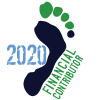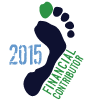However, I get the sense that the different conceptualizations of falling while running is particularly helpful in optimizing technique in people who do not run efficiently. The goal of running is to move smoothly across a surface, not to leap over it or stomp through each step. I'll draw the analogy to a duck that is capable of diving underwater or flying over it, but the most energy-efficient way to traverse a lake is to paddle across it.
Nice analogy!
Regarding those strength training exercises done while perched on top of balance and medicine balls. I don't think that the idea is maximum weight, but to rather train the whole body. For those who haven't tried those types of exercises, it's really a neat experience and forces muscles all over the body to work together in ways that are different from just isolating specific regions. It also helps balance, which isn't a bad thing.
You should check out Kemme Fitness, he has a nice functional fitness program. The thing to remember about working all components of fitness (endurance, strength, agility, timing, balance, coordination, power, & stamina) at once though, is that you will not make as many gains in each component involved. If you isolate them, you'll make greater gains, but it will take more time to work each one individually. There is a trade-off. Functional fitness stuff is great for working a bit of everything in a short amount of time. Sports like basketball, soccer, and rugby, as well as martial arts also work a bit of everything all the time. In training however, serious or pro athletes spend time breaking things down, doing weights, doing agility drills, working on technique, working on stamina, so that all those components are improved when they come back together in performance. Functional fitness is like a sport without any strategy or tactics, great for overall fitness, it seems to me. My preference, however, is to do weights and running, along with some stuff like plyo boxes, jumping rope, mobility stuff, etc., and then, time and scheduling permitting, supplement that with a pick-up game of basketball, get back into karate, or maybe take up jazz dance or something. Unfortunately, time and schedule do not currently permit.
Regarding various factors, I'm going to put conditioning (including training/form/sleep/diet) before genetics. How many people other than world record holders really reach their genetic potential? Other than pro athletes most people have to compromise peak conditioning with work, family, etc.
I agree. For fitness/recreational purposes, who cares about genetics? A neighbor's sister who does triathlons asked me, "what are you training for?" I answered, "longevity."
Regarding learning optimal form at a given pace, I think it depends. I really try to run with approximately the same carriage no matter what speed I'm going. In fact, unless I have my GPS watch, I have difficulty differentiating between 9mm and 10:30mm, particularly if I'm just running based on perceived exertion. (This may be due to lack of experience.) The optimal learning pace is probably going to be different for everyone, but there probably is a range which is reasonable. I found the Lee Saxby video to be helpful, though I'm not exactly sure what pace he sets the treadmill at in the demonstration.
Yah, I wouldn't say my method would work for all, and I certainly wouldn't say my threshold pace for good form is universal, but I think it's worth giving a try if, like me, you don't particularly enjoy thinking about form when you run. I'm lazy that way. I would rather put in greater mental effort forcing the pace than thinking about form. And I know in a month or two, barring further setbacks, I won't even need to expend the mental energy forcing the pace. 9mm will become my new easy pace. Then I'll be completely free to zone out, which is what I love about running the most, getting into that zen-like, meditative state.
I also have difficulty feeling pace, but I know when my form feels good and effortless. Now, thanks to my GPS gadget, I know that that is roughly at supra-9 mm pace. I just need to look down at my left foot, and when it's consistently landing well, I know I must be running 9 mm pace or above. Also, thanks to my Garmin, I'm beginning to get a feel for the difference between 10 mm pace and 11 mm pace. At 10 mm pace, I feel like I can run forever, aerobically speaking, and can get into that meditative state, but have to begin concentrating on form or else my left foot gets a bit off and my posture sometimes slouches a bit. At 11 mm pace, I feel noticeably plodding.




































